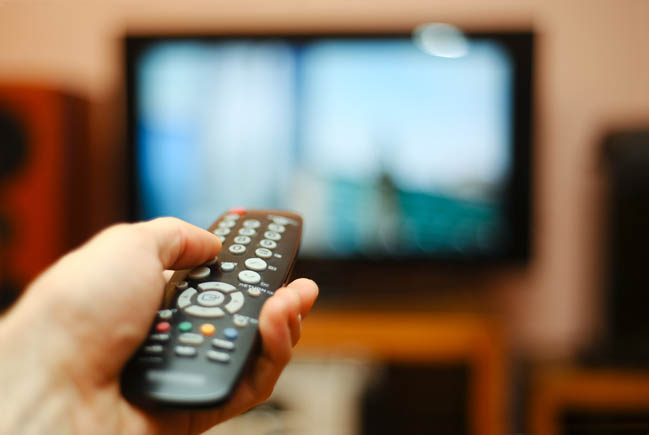Total TV is the answer to the AV effectiveness question

Partner content
Extending reach beyond linear TV and into streaming sounds expensive, but if done correctly, it can potentially be highly cost-effective, writes Kristian Claxton, head of engagement at Finecast
It’s now commonplace to see news and research which argues that the death of linear TV is imminent. In September, Samsung Ads published research that showed streaming accounted for 59% of viewing time on Samsung TVs vs 41% for linear.
TV is undeniably changing, and the long-term trend will likely be for linear to decline and streaming to grow, and we’re witnessing a paradigm shift in how TV is consumed at a technical level. The impact of the COVID pandemic this year has only sped up this change as lockdown struck. Ofcom found that we averaged six hours and 25 minutes per day consuming content in April alone.
However, our Thinking Inside the Box research published this year highlighted that how consumers are currently defining TV is different from how we as an industry do. While 74% may include BVOD in their definition of what TV is, 53% also include SVOD, and 85% think they’ll always have a TV in the house.
Such rapid change in consumption methods, combined with consumer beliefs as to what makes TV, is creating an incredibly complicated and rapidly changing environment that is fragmenting across media, platforms, and content providers, creating challenges for the industry at large. With this in mind, it wouldn’t be surprising if advertisers decided to shift budget away from audio-visual (AV) into pure digital mechanisms that they know will drive short term sales.
But this fragmentation isn’t necessarily a bad thing. Fundamentally, it simply means that the platforms and mechanisms are different, but the audience remains the same. It is a case of leveraging the power of that fragmentation to find the most effective way to capture their attention. Acting now – as consumption shifts to streaming – means advertisers and their partners can spend time learning the best ways to reach them by extending the power of TV through the application of data and opening up opportunities to engage on linear, BVOD and even digital media players.
Extending reach beyond linear and into streaming sounds expensive, but if done correctly, it can potentially be highly cost-effective while still engaging audiences on the most trusted medium. In fact, when buying BVOD, it’s possible to drive both short-term and long-term effectiveness through sales mechanisms – such as location-based car dealerships or extensive brand building.
But how can we prove the benefits? Direct Line Group, one of the UK’s leading insurance companies, sought to understand what level of fragmentation it faces and how it can turn that from a challenge into an opportunity by using solutions such as Finecast to deliver incremental reach on linear using BVOD.
In a test campaign delivered over linear, supplemented on BVOD with Finecast’s support and measured by AudienceProject, it was able to achieve 3.2% incremental reach amongst all adults and a 6.2% increase with 16-34 years over and above what would have been achieved by linear alone. The investment in BVOD also proved to be 22.3% more cost-effective for this audience demographic than linear from day one of the campaign, indicating the considerable potential for savings and the opportunities BVOD can offer. In addition, as BVOD is data-driven, it’s possible to see the effectiveness in near real-time and, therefore, it’s easier to rapidly shift investment to reach audiences more efficiently.
There are also substantial potential cost efficiencies of buying on BVOD over other AV media. In the same test campaign, Direct Line Group also wanted to see the efficiencies of BVOD vs social video and found that the attention and viewable cost per incremental reach point on Facebook was 14 times more expensive.
Simultaneously, Spotify was 22 times more expensive, indicating that, while social media certainly has its place, BVOD is a more efficient and effective means of securing incremental reach on a linear campaign. These findings clearly demonstrate that professionally produced content , that’s designed and served over a total TV environment, is more engaging and efficient in driving reach vs other media.
The reason why BVOD has such potential is due to the data insights it opens up, providing location or interest data, for example. And when aligned with third-party data, it enables advertisers to get a clear picture of the household.
However, just because the industry could potentially shift to personalised targeting doesn’t mean it should. TV is powerful because of its high production value and heart-stopping moments that build brand affinity with consumers. While personalised targeting quite rightly has its place on social media, for example, advertising on BVOD needs to match linear quality and relevance.
Walking this tightrope requires a nuanced approach – one in which addressable TV advertising can play a role. By combining TV’s power with the precision of data, it’s possible to build audiences who will engage with the brand and are more likely to progress down the sales funnel. Serving ads at the postcode and household level enables this engagement to happen while ensuring the ad is more relevant to the audience – all through the power of insight that fragmentation enables.
Despite the significant disruption the industry currently experiencing, advertisers have considerable opportunities to use BVOD to extend their campaigns’ reach and ROI, both for short term sales opportunities and growing the brand’s relevance to its customers.
As linear, addressable TV advertising begins to grow, there will be many more opportunities to deliver engaging and efficient campaigns across video platforms to reach consumers across the AV environment.



